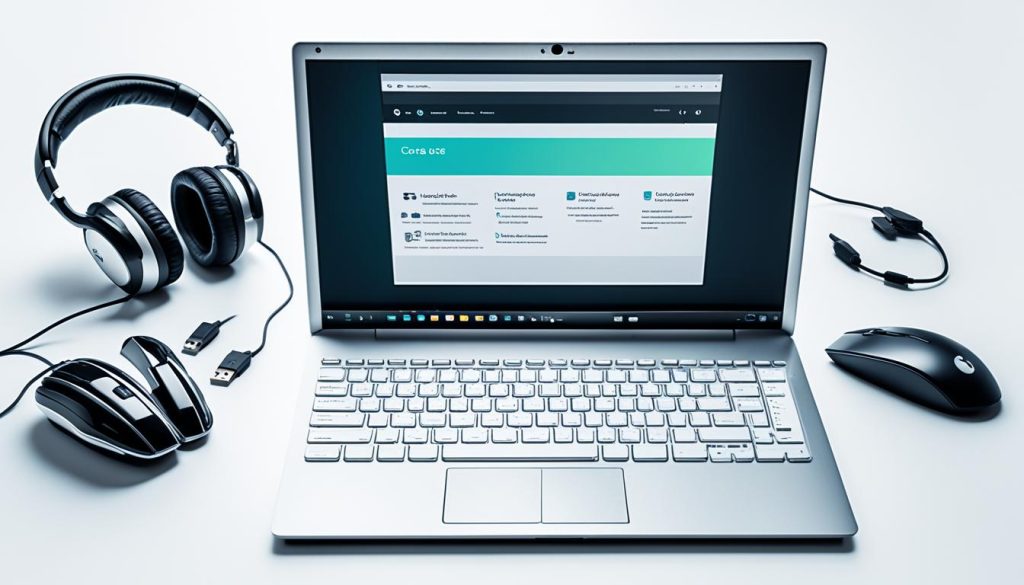Starting a full-time blog in 2024 needs at least $941.40. This may sound like a lot, but what if you’re new to blogging? How much would you spend to kickstart your blog?
If your goal is to transform your blog into extra income or a full job, it’s vital to know the upfront costs. You’ll need to cover things like domain registration and web hosting along with design and creating content. Exploring these expenses will help you understand the initial and potential costs of blogging for the year 2024.
Understanding the Essentials
Domain Name Registration
The first thing to do when starting a blog is to get a Domain Name. Think of it as your blog’s Web Address. A good Domain Name tells people what your blog is about. It can cost between $12 to $60 a year.
Choosing a paid Domain Name over a free one makes your blog look more official. This improves your online image.
Web Hosting Costs
Next, you need to buy Web Hosting. This makes your blog visible on the internet. Hosting can cost from $2.95 to $5.45 each month, based on what you need. Good for starters is Shared Hosting. It’s cheap and gives you enough resources.
But, as your blog gets more viewers, upgrading to better Hosting might be a good idea. Something like Managed WordPress Hosting offers better service and security. Your hosting choice affects your blog’s speed and how reliable it is.
Setting Up WordPress
WordPress is what over 40% of websites use. The best part? WordPress is free. But for a self-hosted WordPress blog, you need Web Hosting.
To start a WordPress blog, you need to install it first. Then, set your preferences and make your site look how you want. Even though WordPress is easy to use, it might take a bit to get used to for some folks.
Design and Customization Costs
Your blog’s design is key to looking professional and appealing online. While there are free themes on WordPress, getting a premium WordPress theme offers more. For $0 to $200, you can get advanced features and better support. Most themes are between $49 to $129 and come with responsive design and SEO tools to make your blog noticeable and match your brand.
Premium WordPress Themes
Investing in a premium theme can really pay off for bloggers serious about their craft. These themes allow for more customization and functionality than free ones. With a premium theme, you gain access to design elements and features that can set your blog apart and enhance how visitors interact with it.
Logo Design Options
A great logo can boost your brand and stick in people’s minds. You could make a basic logo on Canva for free. Or, if you’re up for spending, working with a designer can cost up to $500, depending on what you need. A strong logo can improve how your blog looks and its reputation, which is great for bloggers who are serious about their work.

Content Creation Tools
High-quality Blogging Tools are key to making your blog a winner. Though you could use simple word software, many tools and apps out there make creating content easier. These include AI writing helpers, grammar checkers, and more. The price of these Productivity Apps and Writing Tools varies. It can be from nothing to $50 a month. Picking the right tools can better your writing, make nice-looking content, and up your blog’s success.
The right Blogging Tools can really level up your Content Creation game. AI helpers, grammar checkers, and even idea generators for posts are out there. Productivity Apps also help. They include image editors and info gatherers for articles. These Writing Tools can boost your blog’s quality and your productivity.
These Content Creation tools come at various costs. But, the good they can do often makes them worth it. You’ll find tools that fit your budget, from free to pricey. Picking the right Productivity Apps and Writing Tools wisely can make your content creation smoother. It helps improve your blog and your success as a blogger.
Email Marketing Setup
Setting up an email list is key for making money with your blog and connecting with your readers. There are many email service providers like ConvertKit and Mailchimp. They help you make sign-up forms, organize your subscribers, and send out newsletters.
Some of these services are free but have limited options. For more powerful tools, you might pay up to $50 a month, depending on your needs. Choosing a good email provider lets you talk effectively to your readers. It also sets you up for making money in the future.
Email Service Providers
It’s important to pick the right email service provider to handle and grow your email list. These services give you tools to make sign-up forms, manage different types of subscribers, and target who you send newsletters to. Free plans are available, but for more features and bigger lists, you usually have to pay.
Finding the best email service for your blog matters a lot. It helps you get more people signed up and boosts your email marketing success.
List Building Strategies
Having a good strategy to add people to your email list is crucial. Offering something valuable, like free ebooks or checklists, can encourage people to join. These offers can be simple, like an extra page in a blog post, or more complex, costing up to $500.
Using the right tactics can quickly grow your email audience. This is important if you want your blog to make money.

Website Security Measures
It’s vital to secure your blog with an SSL certificate. This keeps your readers’ data safe and ensures a secure browsing experience. Many web hosts now give out SSL certificates for free. If not, you might need to buy one, costing between $0 to $240 annually. Having your website use HTTPS not only protects data but also boosts its SEO and credibility.
SSL Certificate
An SSL certificate scrambles the data passing between your blog and your visitors. This adds a layer of security and trust for your audience. While some web hosts provide free SSL certificates, you might have to buy one. This step shows that your site is secure and helps build trust with your readers.
Malware Protection
Besides an SSL certificate, protecting your blog from malware is key. Using a security plugin, like Wordfence or Sucuri, is a good start. Costs for these can vary, from $0 to $200 yearly. These tools help spot and block harmful actions, keeping your blog and your readers’ data safe.
Regularly backing up your blog’s data is also important. Many web hosts have built-in options for this. Yet, third-party backup services offer extra security for a small fee. This backup strategy helps prevent data loss and breaches.
Social Media Integration
Connecting your blog with social media helps you reach more people, make them interact, and bring more visits. You can easily add social sharing buttons. Readers can then share your content without trouble, thanks to these buttons.
This feature is usually free with many WordPress tools. Even though it doesn’t cost much at first, spending time on your social media can help your blog a lot. It can grow your audience and make your blog more known.
Social Sharing Buttons
Social sharing buttons let readers share your articles on Facebook, Twitter, LinkedIn, and Pinterest. You can add these buttons to your blog for free with plugins or themes. This makes it easy for readers to share your posts.
By letting people share your posts easily, you use social media to reach more. It also boosts how much your blog gets noticed on social platforms.
Automation Tools
As your blog gets bigger, you might find automation tools helpful. Tools such as Hootsuite, Buffer, or Sprout Social can help. They manage your social media for you, at a cost of $0 to $50 a month.
These tools can do things like scheduling posts or tracking how well you’re doing. They save you time and improve how you use social media. This means you can focus more on making great content and talking with your readers.
Initial Investment Costs in Blogging
When you start a blog, the initial costs can change a lot. This is based on your aims, the kind of blog you wish to make, and how expert you want to be. A simple hobby blog might only need about $34.50 to begin. This includes the basics like getting a domain and hosting. But, for blogs that aim to make money or become a business, you should expect to spend from $65.40 up to $941.40.
These figures include costs for things like better themes, tools for creating content, email marketing, and other advanced features. It’s important to know the starting costs. This helps plan and make sure your blog can last long.
| Type of Blog | Minimum Startup Costs |
|---|---|
| Hobby Blog | $34.50 |
| Side Hustle Blog | $65.40 |
| Full-Time Blog | $941.40 |
It’s key to get a handle on the costs and budgeting for a blog from the start. This is vital for the success of your online project, no matter if it’s just for fun or a serious business.

Budgeting for a Hobby Blog
If you aim to keep a hobby blog, your costs will be much lower. You won’t need to make a lot of money from your blog. A hobby blog can start with about $34.50 in the first year. This lets you write and share freely without financial stress.
The basics for a hobby blog include $15 for a domain name. You also need $2.95 a month for web hosting. Plus, you can use a free or cheap WordPress theme. By sticking to simple setups and avoiding expensive tools, you won’t need much money. This gives you a chance to write about what you love with minimal costs.
Creating a hobby blog, lifestyle blog, or personal blog can help you dive into your interests. It’s a way to meet people who share your passions. With affordable blog options, you can get your voice out there. And you can do it without spending too much money upfront.
Investing in a Monetized Blog
Looking to make your blog a money maker? You’ll have to put in more at the start. This ensures you have all the features needed to make money. Affiliate Marketing is a key way bloggers make cash by promoting others’ items. It might require tools like tracking software or special plugins, which usually cost between $0 to $50 a month. It’s smart to look at these costs against what you could earn. This way, you make sure your blog business can thrive.
Affiliate Marketing Tools
For an Affiliate Marketing program, you’ll need some tools. This includes software to manage affiliates, track sales, and plugins for easy use. These tools usually cost from $0 to $50 per month, based on what you need. Picking the best Affiliate Marketing tools means smoother operations, better tracking, and more money through Passive Income.
Advertising Networks
Using Advertising like banners or sponsored posts is another way to earn. You can start with free or cheap ad networks. But as your blog gets bigger, you might choose to use more exclusive ones to earn more. High-quality ad networks might take part of your earnings or a yearly fee, costing up to $1,000. Choosing the best ad partners ensures more earnings for you and a good experience for your readers.

Hardware Requirements
The hardware you pick for your blog matters greatly. If you lack a proper computer, you might need to buy a laptop or desktop. Prices vary, from $200 to $2,500, based on what you need. You might also buy extras like a good webcam, mic, or extra storage. This could add $0 to $140 to your setup costs. Choosing the right hardware ensures you can make top-notch content and manage your blog well.
Computer and Accessories
For blogging on the go, a good smartphone or tablet is handy. It lets you blog from anywhere, check social media, and take photos or videos. The price can be anywhere from $0 to over $500, depending on what you choose. A portable device isn’t a must, but it does make blogging easier outside your home. It keeps you connected and productive wherever you are.

Outsourcing and Administrative Costs
As your blog gets bigger, think about outsourcing. This could include content creation or managing social media. Or you might look into getting help with admin work. By passing these tasks to others, you get more time for top-priority jobs. Costs for outsourced help vary a lot. They can be as low as nothing if you do it all yourself. But they may reach up to $500 or more each month. Price depends on what the job is, how skilled the person needs to be, and who you hire. This might be freelance writers or virtual assistants. Picking the right tasks to outsource, and finding good providers, can make your blog grow faster.
Outsourcing can mean different things. For instance, you can get a freelance writer to do your research, writing, and editing. This lets you focus on big picture strategies and marketing. Or, you might choose to have a virtual assistant help with admin tasks like emails, scheduling posts, and supporting customers. Using these services can make your blog run smoother as it gets bigger. It helps you manage your time and resources better.
It’s important to choose what to outsource carefully. Look for providers who offer quality work at a price you can afford. By smartly outsourcing, you can lower your admin costs. This can set your blog up for success in the long run, helping it grow steadily.
Accounting and Legal Expenses
As your blog turns from a hobby into a business, you need to think about accounting and legal expenses. This helps you follow tax regulations and other legal requirements. There are costs like business registration fees and tax preparation services. Consulting a lawyer or accountant is also helpful. The price can vary from $0 to over $500 yearly, based on the complexity of your blogging business.
Knowing about taxes is key for your blog business. You might need to register differently depending on where you are and your blog’s structure. Talking to a certified public accountant (CPA) or a tax professional ensures you meet all laws.
You also need to meet legal compliance for your blog business. This means registering your business name and getting any needed licenses or permits. You must also follow copyright and intellectual property laws when using content or images. Working with a business attorney protects you and helps you follow laws.
Keeping good bookkeeping and financial records is crucial. This includes noting your income, expenses, and earnings. You also have to make financial statements and tax records. You can use accounting software or spreadsheets. But, having a professional bookkeeper or accountant can ensure your info is correct.
Additional Costs to Consider
If you want to keep getting better and know the latest in blogging, you should think about learning more. Online courses, webinars, and talking with a coach are good options. You might find some for free online or pay up to $500 for special training. Adding to your skills helps you write better, market smarter, and make more money from your blog in the long run.
Education and Training
As your blog gets more popular, setting aside money for ads and marketing can be smart. That way, more people see your blog, new readers come in, and you get more site visits. Doing this could mean spending $0 (if you do it all yourself) or up to $1,000 each month, depending on your strategy. With a solid plan, your blog can reach more folks and pay off better.
Marketing and Advertising
Investing in your education and smart marketing can boost your blog’s skills and bring in more visitors and money. Check out Blogging Courses, Online Tutorials, or sessions with a coach. These are worthwhile investments for your future success. Also, putting money into Paid Advertising, making your content stand out, marketing on social media, and SEO can expand your blog’s audience. This leads to more people who are interested in what you have to say.
Minimizing Initial Blogging Costs
If you’re a blogger on a budget, starting out doesn’t have to be expensive. Use cost-effective blogging strategies to keep your initial costs low. Platforms like WordPress.com, Wix, and Squarespace offer free basic features. This way, you can begin your blog without spending a lot upfront.
For your blog’s design, make your logo with free tools and find royalty-free images. Use social media for free to spread the word about your blog. By doing this, you can start small and grow your costs with your audience and income.
| Strategy | Cost |
|---|---|
| Utilize free/low-cost blogging platforms | $0 – $10/month |
| Create your own logo using free design tools | $0 |
| Source royalty-free images | $0 |
| Leverage free social media platforms | $0 |
Following these cost-effective blogging strategies will help you start your blog affordably. You can then adjust your spending as your blog grows in readers and income.
Long-Term Cost Projections
As your blog gets bigger, the costs to run it will likely go up. You might need better web hosting, premium themes or plugins for WordPress, or more email marketing features. You might also start to pay others to create content or help with admin tasks.
If more people start visiting your blog, you’ll need a better hosting plan. This could cost between $5 and $25 a month, up from your original $2.95. Exploring pricier WordPress themes, with better features, might then cost you between $49 and $129 a year.
A bigger email list and more complex marketing could mean spending $10 to $50 a month on a better email service. If your blog does really well, you might want to hire help for content or admin work, which could add $500 or more every month.
These costs can pile up, but with a smart budget and growth plan, you can make your blog keep profiting. Careful spending and investing back into your blog can turn it into a successful, fun project that lasts.

